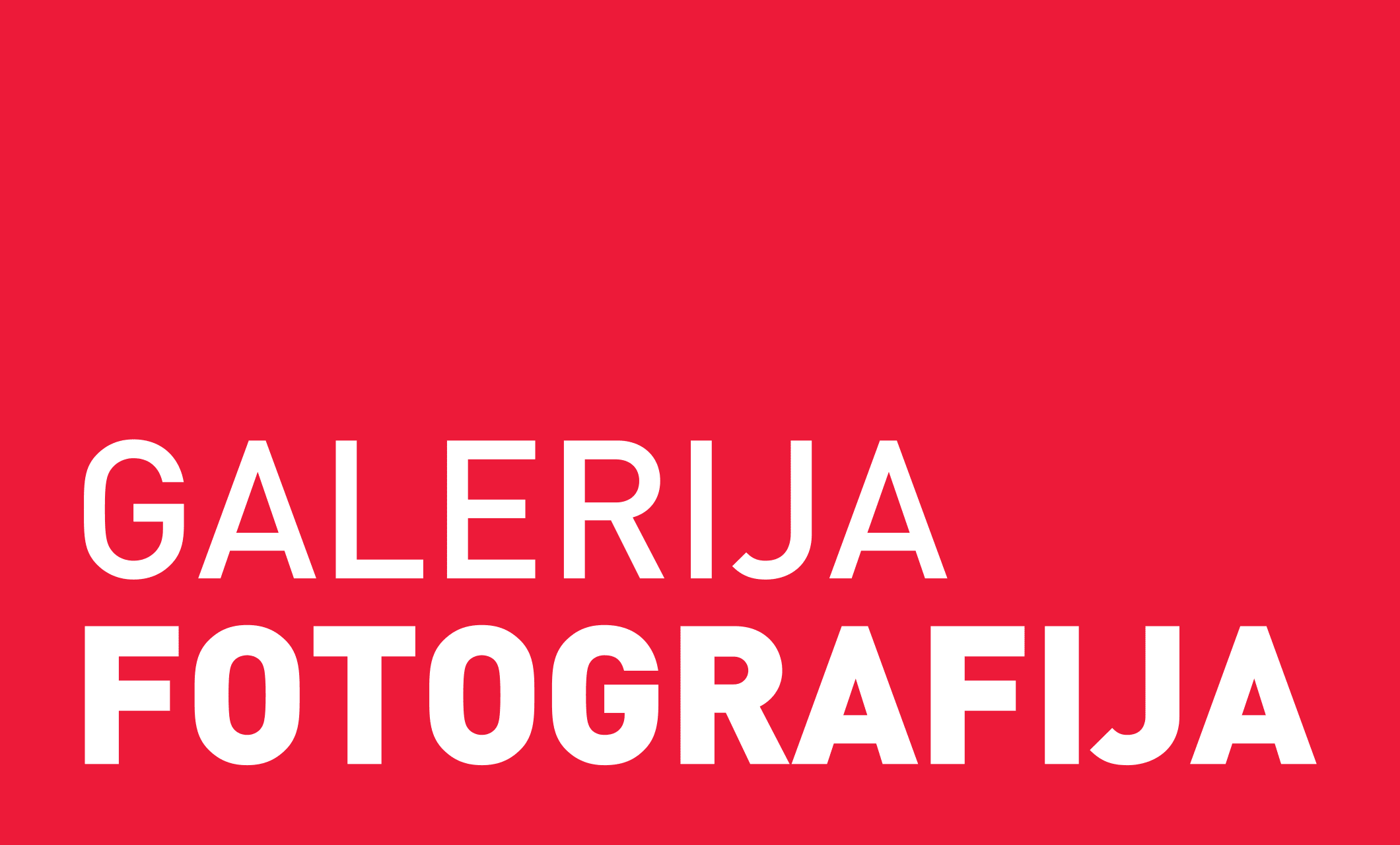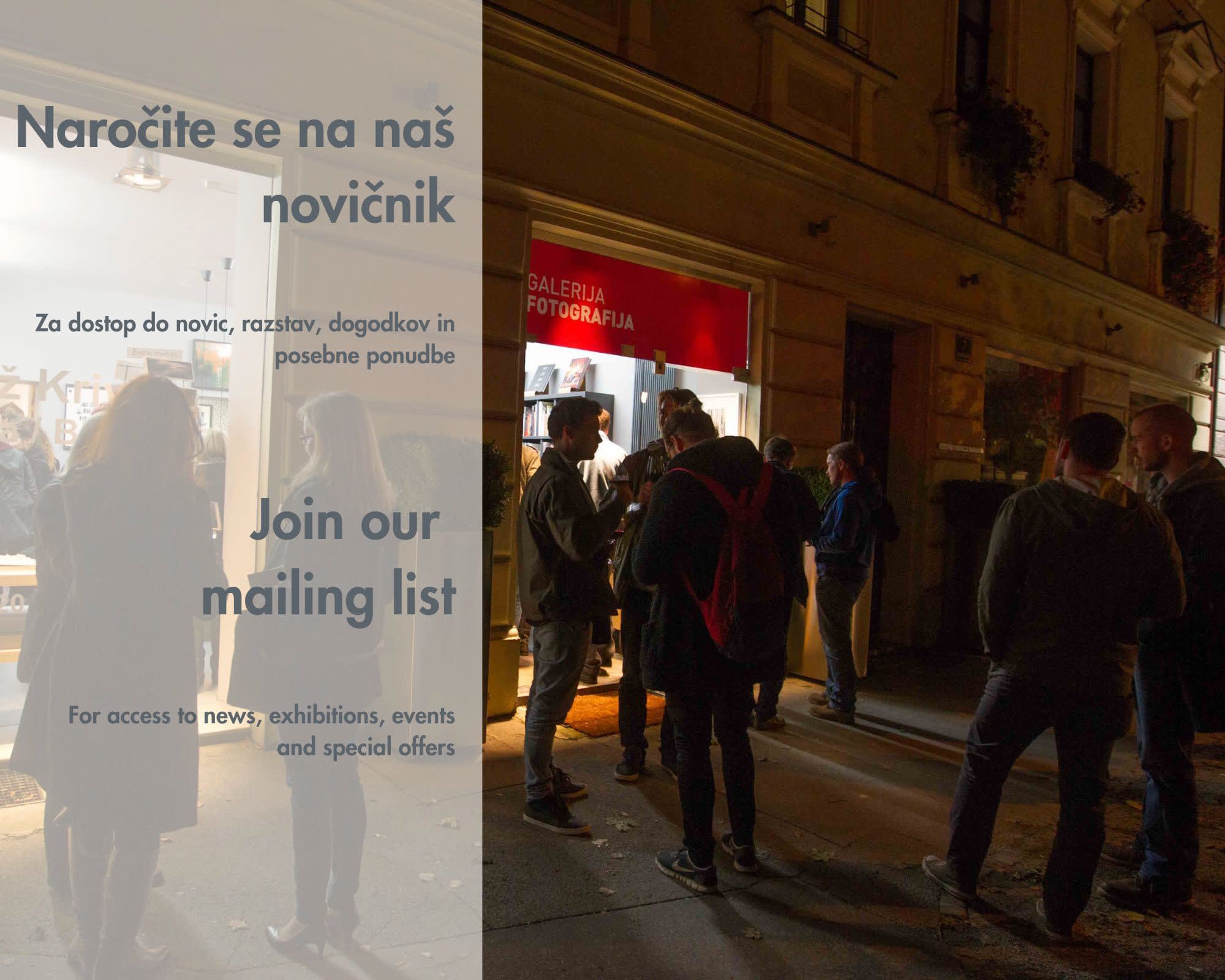Boris Gaberščik: Solve et coagula
Boris Gaberščik, an artist with a profoundly recognisable style, presents his newest series of photographs, created after a turning point in his life between 2015 and 2016. He remains loyal to his aesthetic principles, to the world of overlooked and forgotten objects, to a deep dedication to light and to technical perfection of classical photographs made in his own laboratory.
_
The alchemical laboratory of Boris Gaberščik
Gaberščik’s still lifes are always full of symbolism and allusions, but his work can also be viewed from a purely artistic point of view (especially because the author himself is able to distinguish between the artistic and content-based approach and he mostly prefers to combine the two approaches): simple and at the same time complex compositions which often exceed the limits of Euclidean space and venture into the illusionary and surreal, the relationships mutually established by shapes and light, the rhythm of repetitive geometric shapes, subtle light, rich tonal values, modernist aesthetics and perfectionism in photographic processing.
With the series of still lifes, Solve et Coagula, Gaberščik’s laboratory finally brought forth its true alchemical nature, its motive, soul, copula mundi.[1] It is a place where alchemical processes of the transformation of the matter happen and where the immaterial, symbolic transmutation which transforms the alchemist himself occurs. When the spiritual and tangible levels are combined, alchemy happens and then gold is made.
When I say that Gaberščik’s laboratory (and not Gaberščik himself) finally brought forth its true alchemical nature, I am referring to his statement that it is not us who possess the objects, but they, the objects, possess us. Thus, he is conquered by the alchemical primordial matter, Materia Prima – Massa Confusa, the world of objects from his laboratory which we encounter in his photographs and were carried there by the flow of time. After the turning point in his life,[2] the author again met with the hermetic philosophy, Gnosticism and the only century lasting mystical tradition in Western Europe – alchemy. He began thinking about the ideas put forward by these ideological currents. The images from the series, named after the alchemical maxim, Solve et Coagula, bring the author’s visualization of reflections on the alchemical tradition and topics that are established – in particular, the images want to present questions and not answers.
Most of the non-proficient connect alchemy solely with utopian gold making, but it is a complex esoteric cosmological doctrine with a rich tradition and diverse history. Such knowledge is not only found in Europe but also in the cultural history of India, China and the Arab world.
Western alchemy experienced its heyday in the Renaissance and Baroque, and later in the 17th century it gradually split into the mystical and scientific pole; in the 18th century the scientific gradually becomes chemistry, whereas the mystical half survives as Hermetic philosophy. Mystical aspects of alchemy experienced a re-emergence in the late 19th century with Golden Dawn, with theosophical and traditionalist interpretations, and especially with Jungian interpretation of alchemical symbolism.
The foundation of alchemy is Opus (Work) and normally involves two aspects: the material aspect – the transmutation of metals into either gold or silver, the preparation of the philosopher’s stone; and the mystical, spiritual aspect – the internal aspect which involves the alchemist himself. The uniqueness of alchemy as esoteric science is precisely the merging of the material and spiritual. The fundamental maxim Solve et Coagula (dissolve and coagulate) alludes to the primordial matter which is perceived as the state of pure potentiality, the ontological state which has no specific form, not only in terms of metals, but also generally in the cosmogonic sense. This condition is called Materia Prima, chaos, Massa Confusa. It is the ontological status of chaos before the beginning of the cosmos. Metals have, with their specific form as a part of the cosmos, ousia (essence) or form (actualization). The alchemical premise is as follows: “If it were possible to dissolve a specific form of metals (for example the form of copper) and return them into the state of chaos and pure potentiality, then it would be possible to imprint a new specific form, new essence on them and as such transmute them.”[3] The process of transformation occurs in the seven steps: Calcination, Dissolution, Separation, Conjunction, Fermentation, Distillation and Coagulation. The experimental work in the alchemical laboratory focuses on creating the philosopher’s stone, where combining the opposites which are connected in perfect equilibrium, the manipulation of sulphur and mercury, is the ultimate interference. In the texts, it is symbolized with the holy marriage of King and Queen (Coniunction), the Sun and the Moon. The alchemical Opus connects both parts: the chemical endeavour of the alchemists and the mystical side of alchemy, the alchemists “suffers” when the substance “suffers”, with its “death”, the alchemist also dies internally. The reincarnation and triumphant resurrection of the substance glorifies the soul of the alchemist.
Reading of alchemical texts is required for a deeper understanding of alchemical skills and symbols, at the same time it is about the so-called initiatory practice of the transmission of hidden skills through hallowed adepts. Titles of the photographs even from this quite superficial description eloquently enough reveal links with the themes of alchemy: Solve et Coagula, Massa confusa, Tabula Smaragdina, As above so below, as below so above, Solutio, King and Queen (Coniunctio), Sulphur, Fatum, Demiurg, Ouroboros… and at the same time invite you to discover the secrets of the exhibition protected by the only image formed outside the alchemical laboratory, the Guardian of Secrets.
Just as the alchemist in his own laboratory enriches the matter and from base metals creates gold, Gaberščik in his photographic laboratory creates silver images. When he tones them with Sulphur, the ultimate creation occurs, the philosopher’s stone. With the help of the photography, his Massa Confusa, dead and forgotten objects transform, become alive and through the material speak about the metaphysical. The photographic studio and the objects in it are the author’s Copula Mundi. They connect corpus, the author and his soul with the divine, spirit and light.
Today’s meaning of the word laboratory derives from the Latin word laboratorium which connects two words: labor (difficult endeavour, effort) and oratorium (a place of prayer). Laboratory is therefore the space for work and prayer. In his photographic laboratory Gaberščik combines both. Tireless work, labor, is the way he uses for making photographs and is thus worthy of a deeper look, especially for someone who is not familiar with it and who finds it difficult to imagine the way he creates his distinctly recognizable aesthetics. The technology used for making photographs demands a detailed knowledge of technological and optical properties of the photography equipment and it allows exceptionally thorough tracing, as well as depth of field over a vast area on the image. It requires calculating the zones of depth of field depending upon the photographic film, lens and aperture. Films are of low sensitivity (below 25 ASA), whereas the exposure time is long – even up to four minutes. The equipment in technical implementation in precision mechanics and optical detail (the realization of the aperture and lenses, consequently the optical power, for example diffraction of light), differs from the dominant contemporary equipment and also affects the aesthetics of the image. Gaberščik’s address is technologically and consequently aesthetically close to the photographers of Group f/64 who believed that the camera sees better as a passive observer or it shows the world exactly as it is. “When asking myself a question why I take photographs, I answer that it is to see how this object would look photographed; because to me this is something completely different.”
The second part of the laboratory ritual requires skills for making photographs with the classical collodion process which is today becoming the “secret” skills. Films, photographic paper and chemicals have been disappearing from market, it is necessary to test formulas, adjust the procedure and proportions which enable the desired effects considering the available material. He uses some of the almost hundred year old procedures that, as an alchemist in search of and striving for the ultimate goal, he had adjusted himself. Prayer in the alchemistical, photographic laboratory of Boris Gaberščik honours light.
“… And on the wave is deeper blue,
And on the leaf a browner hue,
And in the heaven that clear obscure,
So softly dark, and darkly pure…”[4]
“This verse is my guideline when it comes to using light. I like the light that is quiet, does not absorb or block objects, instead it encourages them to exist, show their wounds to the world, the Germans would say Gebrauchsspuren.[5] Without them, an object is just an object. I’m interested in relationships between objects; the light is the medium in which I submerge them. I feel the light, for me it’s stronger than the sound. In physics, light is an electromagnetic wave, for me light is strongly emotional, even a spiritual experience, I could compare it to a spiritual experience in architecture, to the cathedral. In Hermetism, the Sun is the only visible god and for me as well, the usage of light is mystical; I don’t take it for granted. When I’m photographing I only decide on some light coming from the right, exposure time can last for a couple of minutes and then, as a beginner still, I hold my breath. The compositions are static, nothing can move, but for me these moments are magical; it is then that the story transfers to the film.
I’ve dealt with light a lot, where does it come from, how it comes; for example in the works by Pierro della Francesca light is everywhere, it’s coming from everywhere, whereas on Rembrandt’s The Night Watch, it is oriented. In this series I don’t use focused light, unless the objects alone create it. Light is completely uniform; I believe that the objects themselves must modulate it, because that’s how they actively participate. It’s different to whether you expose them or put in the background with the help of light. For me light has to be like a breath, completely vegetative, just like breathing which you can hardly be aware of, it mustn’t be emphasized anywhere. The light is for me the crucial tone.”
Alchemy of Gaberščik’s laboratory is therefore double, the enrichment of worthless, forgotten, discarded objects, the matter with the idea, spirit (Spirit in Materia), transformation and modification of objects, this is the upper alchemy and completely material, the lower alchemy: the manipulation of silver with sulphur – the making of gold. Created gold is in his case his photography.
Renata Štebih






